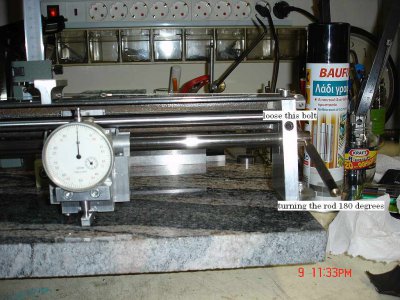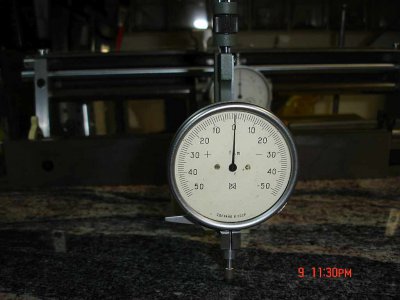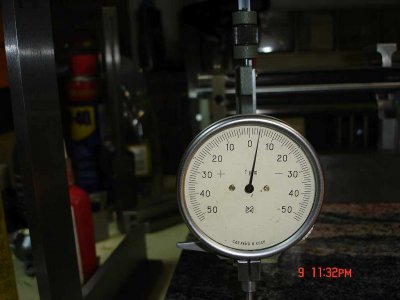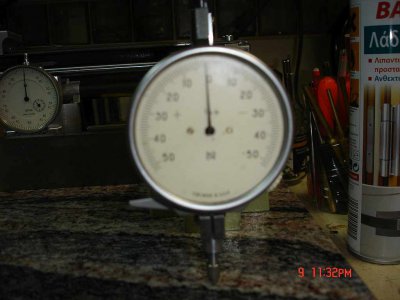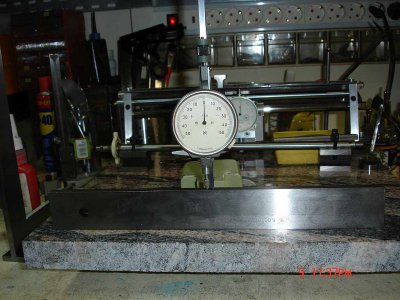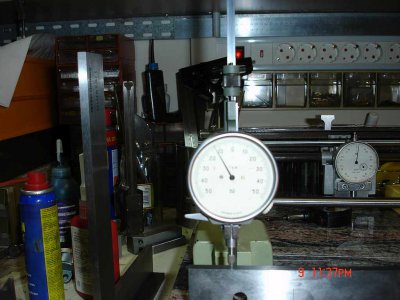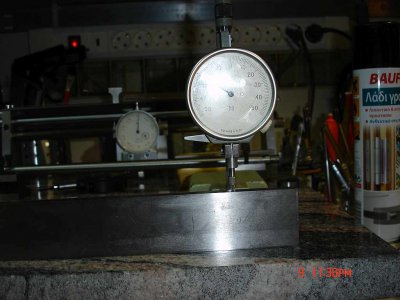- Joined
- Jan 6, 2013
- Messages
- 125
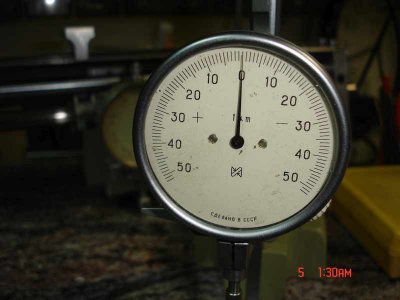
Fig 1 1µm Comparator by IZMERON
The method for verifying the epipedometro using the facilities available,
including instruments and knowledge, is as follows.
Using a 1μm resolution dial comparator,mounted on a height gauge by an adapter i made
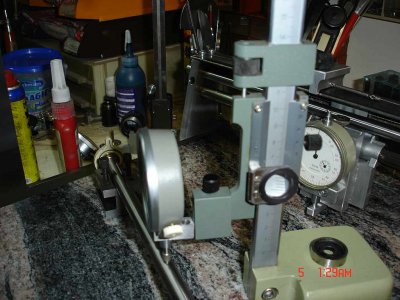
Fig 2 Dial ind on height comparator
I measured the sagitta (bending) at the center and at intervals of 2cm along the length of the rod.This
is another rod for the demonstration.
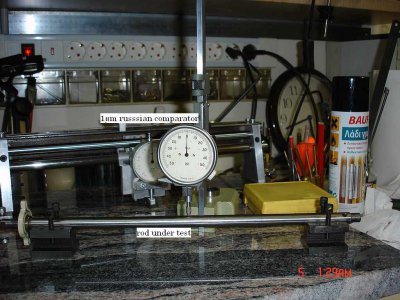 Fig 3 Measuring the straightness
Fig 3 Measuring the straightnessThe rod is supported on V blocks.The measurement was taken by rotating carefully the rod and noting the max deviation.
First measurements showed a sagitta of 4μm that is a deviation of 2μm from straightness. It may seem brutal,
but i bent the rod by hand pressure, mounted on the V blocks using soft pads in the V and very easily,after only 2 attempts
there was no sensible movement of the dial comparator needle,all along the length.The measurement is rather difficult.
Temp was 20o C but the slightest vibration from passing cars affects it though my cave is on concrete floor.
I will continue,if there is any interest.
Ariscats

